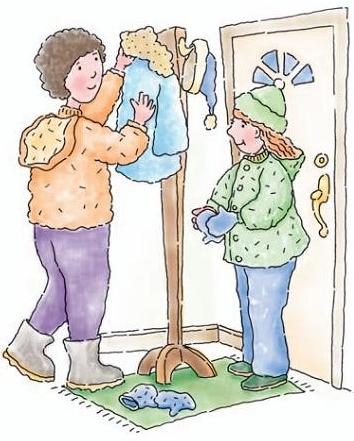.jpg)
Electrical Safety Authority (ESA) - Important Information you need to know to arrange for electrical repairs before power can be
restored to your home.
Severe storms can cause dangerous or life-threatening conditions. The dangers include blinding snow, extreme cold, icy road conditions, drifting snow, and downed trees and power lines. It's important to prepare before the winter storm season.
Before
- Stay informed of winter weather.
- Keep a sufficient supply of heating fuel. Consider storing a back-up fuel, such as a good supply of dry, seasoned wood for your fireplace or wood stove.
- Winterize your home. Insulate walls and attics, caulk and weather-strip doors and windows, and install storm windows or cover windows with plastic.
- Insulate pipes with insulation or newspaper and plastic and allow faucets to drip a little during cold weather to avoid freezing.
- Learn how to shut off water valves in case a pipe bursts.
- Winterize your car. Keep a shovel, a windshield scraper, and a small broom in your vehicle.
- Add rock salt, sand, and shovels to your emergency supplies kit, as well as extra socks, hats, mittens, and blankets.
During
- Conserve fuel.
- Stay safe and dry indoors.
- If you are outside, cover your mouth, keep dry, and avoid overexertion. Dress for the weather, wear layers, mittens, and a hat.
- Watch for signs of frostbite, including loss of feeling and white or pale extremities. If you detect any symptoms, seek immediate medical attention.
- Watch for signs of hypothermia, including uncontrollable shivering, memory loss, disorientation, incoherence, slurred speech, drowsiness, and apparent exhaustion. Get the victim to a warm location; remove any wet clothing; put the person in dry clothing and wrap their entire body in a blanket; warm the center of the body first; give warm, non-alcoholic or non-caffeinated beverages; and seek medical attention.
 Drive only if absolutely necessary. If you become trapped while you have a cell phone, call 9-1-1, explain your situation, and tell them to try to track your location by the phone signal. If you must drive, travel during the day; don't travel alone; keep others informed of your schedule; and stay on main roads.
Drive only if absolutely necessary. If you become trapped while you have a cell phone, call 9-1-1, explain your situation, and tell them to try to track your location by the phone signal. If you must drive, travel during the day; don't travel alone; keep others informed of your schedule; and stay on main roads.
- If a blizzard traps you in your car, pull off the highway and stay in your vehicle. Tie a brightly colored cloth to the antenna and turn on the inside light at night for rescuers to see. Run the engine and heater about ten minutes each hour to keep warm. When the engine is running, open a downwind window slightly and periodically clear snow from the exhaust pipe. In extreme cold, use any available means to insulate and maintain body heat. Make sure at least one person is awake at all times to watch for rescuers.
After
- Check on neighbors or anyone who may need assistance.
- Use common sense when going outdoors; dress warmly and always wear a hat. Stretch before shoveling heavy snow. Take frequent breaks. Use caution when walking on snowy walkways.
- Supervise children at all times. Children should be told to play only in safe, supervised areas outdoors—never in the street or snow banks on the side of the road.
Developed by NFPA. Funding provided by the U.S. Department of Homeland Security, Office of Domestic Preparedness.